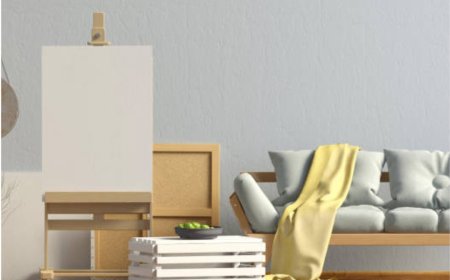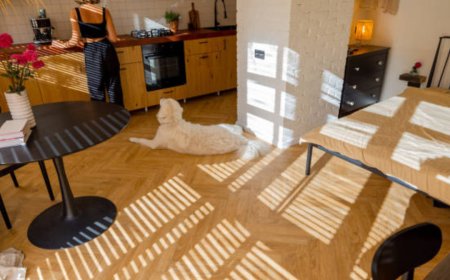Tips for Mixing Old and New Furniture Pieces
Discover expert tips for mixing old and new furniture pieces to create a balanced, stylish space with personality and timeless appeal.

Creating a harmonious home environment doesn't always require a complete furniture overhaul. In fact, blending old and new furniture pieces can result in a space that feels both timeless and contemporary. Whether youre an interior design enthusiast or just updating your living space, the art of mixing different styles lies in balance, thoughtful placement, and understanding the characteristics of each item. This approach allows your personality to shine through your decor while maximizing the use of what you already own. With just a few key strategies, you can design a home that feels curated rather than chaotic.
Why Mixing Old and New Furniture Works
Theres a certain charm in pairing a vintage coffee table with a sleek, modern sofa. This contrast adds depth, visual interest, and individuality to any room. More than just a trend, blending styles tells a story, your story. Each of your furniture pieces represents a different chapter of your life, and putting them together creates a personalized, layered aesthetic. It also encourages sustainability by allowing you to reuse quality older items instead of discarding them for newer alternatives. When done thoughtfully, this method can turn an ordinary home into a stunning reflection of taste and history.
Start with a Neutral Base
One of the key elements when mixing furniture pieces from different eras is to begin with a neutral foundation. Use walls, flooring, and large upholstered items in subtle tones like beige, grey, or white. This base acts as a visual anchor, allowing your more decorative or contrasting items to stand out without overwhelming the space. A neutral backdrop offers flexibility, enabling you to easily switch out pieces or introduce new design elements over time. It also softens the clash between styles, making even the most eclectic combinations feel cohesive and intentional.
Layer Styles with Intention
When incorporating a mix of old and new items, the goal is to create a layered look that feels cohesive, not cluttered. For instance, you might pair a mid-century modern chair with a rustic wooden desk. To tie the look together, use complementary finishes, similar shapes, or matching color schemes. In a space like this, adding luxury furniture items in Wiggins can elevate the entire arrangement, offering a high-end feel while still preserving the blend of styles. These pieces often serve as striking focal points that integrate well with both vintage and contemporary elements, lending your space sophistication and flair without overpowering its charm.
Use Accent Pieces to Bridge Eras
Accent pieces such as lamps, mirrors, or rugs can act as connectors between different furniture styles. If youre struggling to blend your older furniture with newer acquisitions, look to these smaller items for help. For example, a modern lamp on a vintage console table or a classic rug under a minimalist coffee table helps bridge the stylistic gap between your furniture pieces. These accents don't just fill space; they create unity. The key is to select items with common elements like metal finishes, color palettes, or design motifs that can tie together a wide range of decor influences in a single room.
Balance Proportions and Scale
A common mistake when mixing different furniture pieces is ignoring scale. To maintain harmony, always consider the size and proportions of each item. A bulky antique armoire might look out of place next to a lightweight modern side table. Conversely, pairing pieces of similar scale, even if theyre from different design periods, creates balance. Use your rooms dimensions as a guide. In smaller rooms, opt for sleek, compact items with clean lines. Larger rooms allow for bolder, more dramatic combinations. Carefully balancing size and scale ensures that no piece dominates the room and everything feels thoughtfully placed.
Unify with Color and Texture
While your furniture pieces may come from various design periods, color and texture can unify them. Incorporate a consistent palette throughout the room, even if the pieces themselves are dramatically different in style. For example, a tufted vintage chair and a modern linen sofa can coexist beautifully if they share a similar shade or complementary tones. Similarly, combining textures like wood, metal, and fabric in repeating patterns throughout the space creates visual rhythm. Repetition in materials or color helps establish a cohesive flow, which is crucial for preventing the space from feeling disjointed or chaotic.
Focus on One Statement Piece per Room
Every room should have one hero item, the piece that commands attention. This could be a bold antique cabinet, an art-deco armchair, or a cutting-edge modern couch. Once youve chosen your statement piece, design the rest of the space around it. The supporting furniture pieces should complement this star item rather than compete with it. This approach brings order and visual clarity to the room. It also allows you to confidently mix old and new without fear of the space looking mismatched. A single statement piece becomes the anchor around which other items revolve harmoniously.
Incorporate Art and Decor as Style Glue
Decorative items, including wall art, vases, and sculptures, serve as essential components when blending furniture pieces. These small but impactful elements can help bridge stylistic divides. For instance, abstract wall art can add a modern touch to a room filled with vintage furniture. Conversely, a traditional landscape painting may soften a space dominated by minimalist modern pieces. Think of decor as the glue that brings the entire look together. Even when your larger furniture items vary greatly in style, the right decor can provide continuity, theme, and elegance to the overall design.
Avoid Clutter Embrace Minimalism
While its tempting to display all your treasured furniture pieces, restraint is vital. Too many conflicting items can lead to visual clutter. Instead, aim for a minimalist approach that highlights your best pieces while leaving room to breathe. Every item in a room should have a purpose, whether functional or aesthetic. Group items in odd numbers, use negative space effectively, and eliminate anything that doesnt contribute to the design story youre trying to tell. This minimalist mindset allows each piece, new or old, to shine on its terms without competing for attention.
Final Thoughts
Blending old and new furniture pieces is more than a design technique;its a way to craft a home that tells your unique story. By thoughtfully combining eras, textures, and colors, you create spaces that feel personal, lived-in, and effortlessly stylish. Remember, great design doesnt come from following rules but from understanding them well enough to break them artfully. Whether youre incorporating heirloom treasures or modern investments, approach each choice with intention and creativity. Your home should reflect both where youve been and where youre going, a beautiful mix of past and future.




























